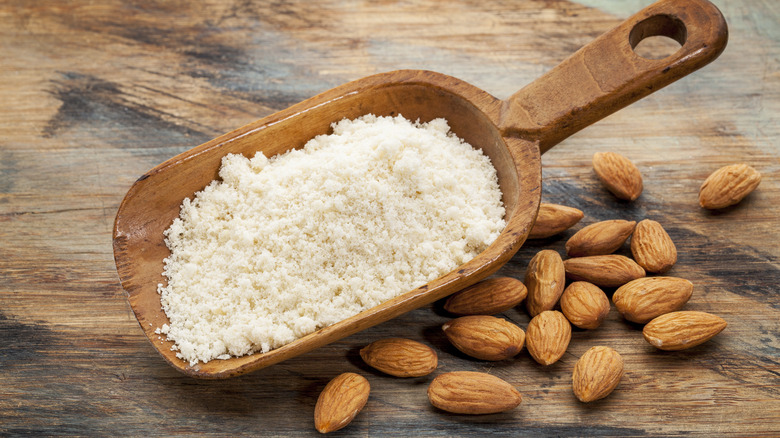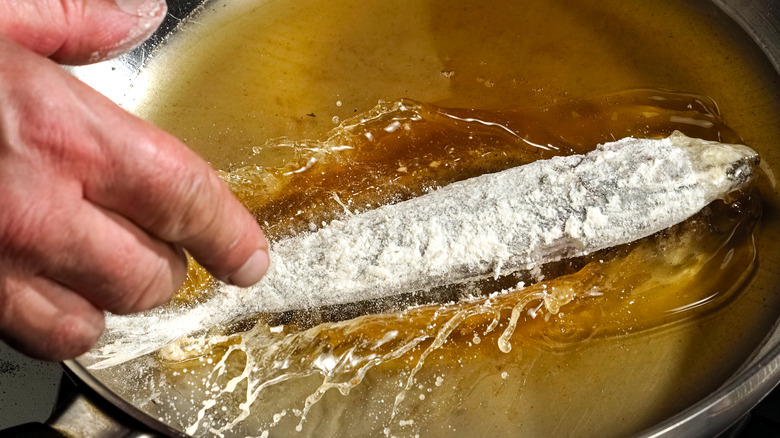Almond Flour Is The Gluten-Free Bread Crumb Swap You Need
It's always smart to know the alternatives we can use for certain ingredients in a recipe. That way, we have something to rely on when our usual choices are not available. More importantly, we can make adjustments when cooking for people who have health-related dietary restrictions. With as much as 1% of the general population affected by celiac disease and up to 13% afflicted with non-celiac gluten sensitivity, it's crucial to know which food items can replace ingredients that contain gluten yet still provide good flavor and texture.
For dishes relying on bread crumbs to bind different components and achieve a delectable texture and presentation, gluten-free almond flour works as a good substitution. Low in carbs but high in nutrients, healthy fats, and fiber, this starch is made from almonds that have been blanched to remove their skins then crushed into a powder that's finer than almond meal. Like its source, it's mildly sweet and nutty with a hint of bitterness that adds a layer of flavor to savory dishes.
How much almond flour you'll use depends on the purpose of the bread crumbs in your recipe. Generally, you can apply a 1-to-1 ratio when it's for coating food for frying or baking and when using it as a binding agent. The exception would be when you're making meatballs or stuffing, when an excessive amount of almond flour would overwhelm the texture and flavor; for this purpose, use ¼ cup of almond flour to replace 1 cup of bread crumbs.
Frying with almond flour calls for a lower temperature
Another thing to consider when cooking with almond flour is its high fat content. This means when used to coat food for frying, almond flour can burn and turn brown quickly in high temperatures. It is better suited for shallow frying and cooking with oil at a low to medium temperature than deep frying. You need to keep a close eye on the pan, too, and adjust the heat to make sure the food doesn't turn dark. With shallow frying, the ideal temperature is 375 degrees Fahrenheit.
For a tastier coating on your fried dishes, add your favorite spices and seasonings to almond flour before dredging meat, chicken, fish, or vegetables in it. To add even more crunch to the crust, mix in some gluten-free rolled oats or chopped raw almonds and other nuts. Make the whole mixture crumbly by running it through a food processor.
When using almond flour to make meatloaf or meatballs, try toasting it beforehand to enhance its nuttiness. Do this on a pan over medium heat, pressing down on chunks to create a smooth and even layer. Stir it constantly and watch closely when the flour starts to turn brown. Remember: Almond flour burns quickly, so once it gets as toasted as you want it, remove the pan from the heat immediately. Enjoy the deeper flavor it lends to dishes. Use it as a tasty topping, too, for pasta, pizza, and soup for extra texture.

